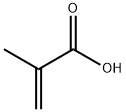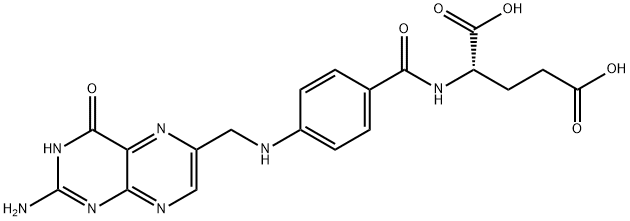Methylacrylic acid , 98%, including 250ppmmehq stabilizer , 79-41-4
Synonym(s):
2-Methacrylic acid;2-Methylpropenoic acid;Methacrylic acid
CAS NO.:79-41-4
Empirical Formula: C4H6O2
Molecular Weight: 86.09
MDL number: MFCD00002651
EINECS: 201-204-4
PRODUCT Properties
| Melting point: | 12-16 °C (lit.) |
| Boiling point: | 163 °C (lit.) |
| Density | 1.015 g/mL at 25 °C (lit.) |
| vapor density | >3 (vs air) |
| vapor pressure | 1 mm Hg ( 20 °C) |
| refractive index | n |
| Flash point: | 170 °F |
| storage temp. | Store at +15°C to +25°C. |
| solubility | Chloroform, Methanol (Slightly) |
| pka | pK1:4.66 (25°C) |
| form | Liquid |
| color | Clear |
| Odor | Repulsive |
| PH | 2.0-2.2 (100g/l, H2O, 20℃) |
| explosive limit | 1.6-8.7%(V) |
| Water Solubility | 9.7 g/100 mL (20 ºC) |
| Sensitive | Moisture & Light Sensitive |
| Merck | 14,5941 |
| BRN | 1719937 |
| Exposure limits | TLV-TWA 20 ppm (~70 mg/m3) (ACGIH). |
| Stability: | May be stabilized by the addition of MEHQ (Hydroquinone methyl ether, ca. 250 ppm) or hydroquinone. In the absence of a stabilizer this material will readily polymerize. Combustible. Incompatible with strong oxidizing agents, hydrochloric acid. |
| InChIKey | CERQOIWHTDAKMF-UHFFFAOYSA-N |
| LogP | 0.93 at 22℃ |
| CAS DataBase Reference | 79-41-4(CAS DataBase Reference) |
| NIST Chemistry Reference | 2-Propenoic acid, 2-methyl-(79-41-4) |
| EPA Substance Registry System | Methacrylic acid (79-41-4) |
Description and Uses
Methacrylic acid, abbreviated MAA, is an organic compound. This colourless, viscous liquid is a carboxylic acid with an acrid unpleasant odor. It is soluble in warm water and miscible with most organic solvents. Methacrylic acid is produced industrially on a large scale as a precursor to its esters, especially methyl methacrylate (MMA) and poly(methyl methacrylate) (PMMA). The methacrylates have numerous uses, most notably in the manufacture of polymers with trade names such as Lucite and Plexiglas. MAA occurs naturally in small amounts in the oil of Roman chamomile.
Methacrylic acid is used in the manufacture of methacrylate resins and plastics. It is used as Monomer for large-volume resins and polymers, organic synthesis. Many of the polymers are based on esters of the acid, as the methyl, butyl, or isobutyl esters. Methacrylic acid and methacrylate esters are used to prepare a wide range of polymers [→ Polyacrylamides and Poly(Acrylic Acids), → Polymethacrylates]. Poly(methyl methacrylate) is the primary polymer in this category, and it provides water-clear, tough plastics that are used in sheet form in glazing, signs, displays, and lighting panels.
Safety
| Symbol(GHS) |   GHS05,GHS06 |
| Signal word | Danger |
| Hazard statements | H302+H332-H311-H314-H335 |
| Precautionary statements | P261-P280-P301+P312-P303+P361+P353-P304+P340+P310-P305+P351+P338 |
| Hazard Codes | C |
| Risk Statements | 21/22-35-37-20/21/22 |
| Safety Statements | 26-36/37/39-45 |
| OEB | A |
| OEL | TWA: 20 ppm (70 mg/m3) [skin] |
| RIDADR | UN 2531 8/PG 2 |
| WGK Germany | 1 |
| RTECS | OZ2975000 |
| Autoignition Temperature | 752 °F |
| TSCA | Yes |
| HS Code | 2916 13 00 |
| HazardClass | 8 |
| PackingGroup | II |
| Hazardous Substances Data | 79-41-4(Hazardous Substances Data) |
| Toxicity | LD50 orally in Rabbit: 1320 mg/kg |





